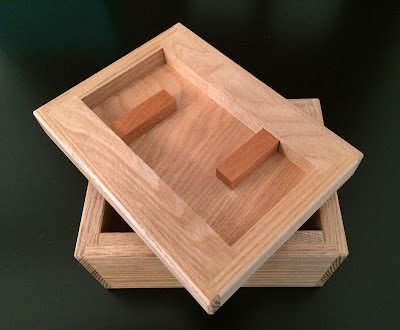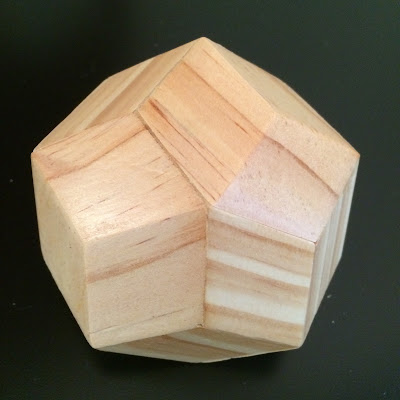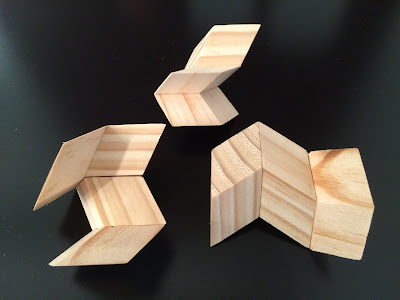I had thought that with the fair amount of practice I have had with packing puzzles designed by Goh Pit Khiam such as Dancing Shoes, Almost There, Fusion etc and Stewart Coffin's CCC-1, Cruiser and Five-FIt, I would have been able to solve William Waite's IPP36 Exchange Puzzle the CheckerBored 3. But this was not to be the case, sadly.
Waite's CheckerBored 3 consists of a regular square tray(10cm x 10cm) and six 6 other pieces. The pieces look as if they have been dissected from a regular 8x8 checker board into different shapes and 5 of the pieces consists of diagonal half squares as well.
The entire puzzle has been precision laser cut with the darker squares laser etched in a grid pattern. Quality fit and finish is very good and each puzzle comes in a sponge lined box for protection.
The object is to place all the 6 pieces into the tray to make a checker board pattern and with half squares permitted.
The typical starting point would be to try placing all 6 pieces inside the tray and adjusting the pieces randomly to find a fit. But of course this would have been too easy and yielded no success. Somehow one piece just "didn't gel in with the others". I think I must have spent several hours over the course of a few days of puzzling but got no where; to the point I actually wondered if I had been given a wrong piece(s). Finally I threw in the towel and shot Waite an email asking for the solution. Waite replied to say he was traveling and had no access to the solution until the following week. But he did give me a couple of hints.
Using his hints....yes, it is possible to lay out the 6 given pieces in the tray in a checker board pattern as intended and it looks amazing...now why didn't I try that??
Nothing more needs to be said. A very challenging puzzle IMHO and die hard packing fans (Dave Holt, if you are reading this) won't be disappointed. You won't find CheckerBored 3 on his site but you can try contacting Waite directly (via his site contact) for availability.

















